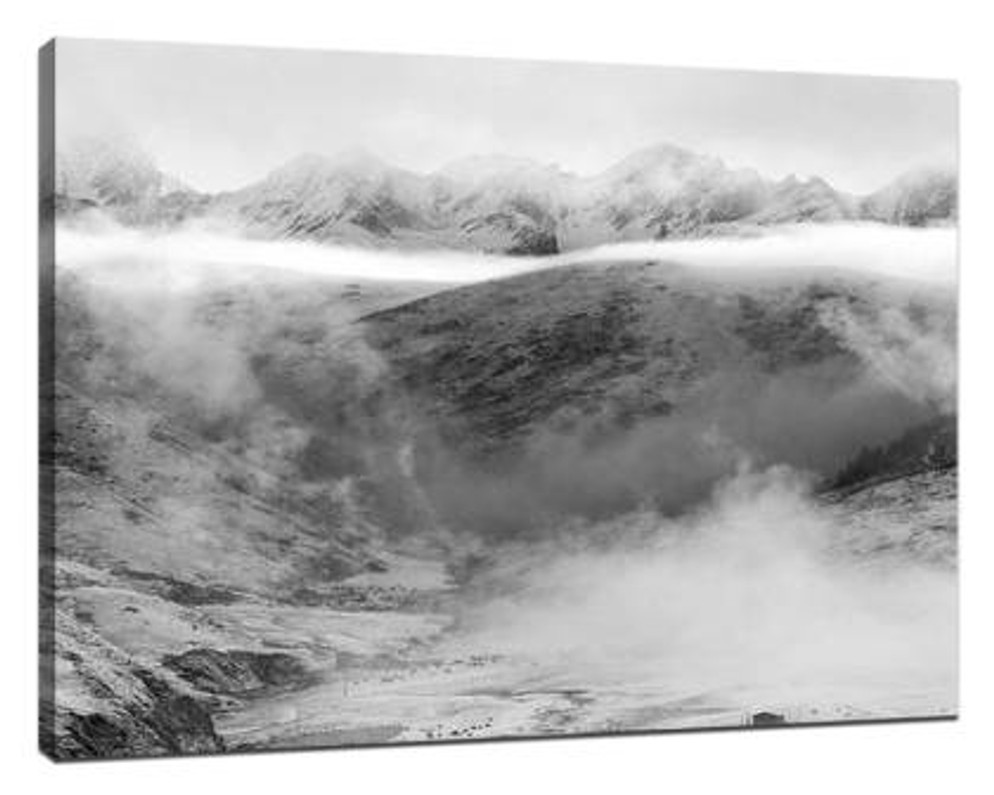Mistakes Landscape Photographers Often Make and Suggestions for Improvement
Landscape photography is one of the most rewarding genres in photography, offering breathtaking views and timeless memories. Many photographers aspire to capture scenes that not only impress viewers but also become beautiful pieces of art suitable for canvas prints to display at home or sell. However, achieving exceptional landscape photography requires avoiding some common pitfalls. Here, we’ll explore frequent mistakes and practical suggestions to elevate your landscape photography skills.
1. Ignoring Composition Rules
A common mistake is overlooking composition principles. Photographers sometimes rely solely on the beauty of the scenery without considering how elements are arranged in the frame. Without proper composition, even stunning landscapes can appear chaotic or unbalanced.
Suggestions:
-
Use the rule of thirds to position key elements in your scene.
-
Include a strong foreground element to add depth.
-
Pay attention to leading lines to guide the viewer’s eye through the image.
-
Experiment with framing techniques using natural objects like trees or arches to add context.
2. Poor Use of Light
Lighting is critical in landscape photography. Shooting at the wrong time of day can lead to flat, uninteresting images or overexposed highlights. Many photographers rely on midday light, which is harsh and reduces color vibrancy.
Suggestions:
-
Shoot during the golden hour (shortly after sunrise or before sunset) for warm, soft light.
-
Utilize diffused light during overcast days to minimize harsh shadows.
-
Learn to use exposure bracketing to capture dynamic range in high-contrast scenes.
3. Neglecting Focus and Sharpness
A sharp, focused image is crucial for professional-looking landscapes. Some photographers either use the wrong aperture or fail to account for camera shake, leading to soft or blurry images.
Suggestions:
-
Use a tripod to stabilize your camera, especially in low-light conditions.
-
Set your aperture between f/8 and f/16 for optimal depth of field.
-
Focus on the hyperfocal distance to ensure foreground and background are sharp.
-
Use a remote shutter release or timer to avoid camera shake.
4. Overlooking Weather Conditions
Weather can dramatically affect the mood and quality of your landscape photos. Many photographers ignore forecasts, missing opportunities for dramatic skies or interesting light conditions.
Suggestions:
-
Check weather apps before heading out.
-
Embrace changing weather—fog, storms, and rain can add drama and uniqueness.
-
Adapt your camera settings for varying conditions, such as increasing ISO in low-light weather.
5. Not Paying Attention to Post-Processing
Post-processing can make or break a landscape photograph. Many beginners either over-edit their images or avoid editing entirely, which can result in unnatural colors or dull images.
Suggestions:
-
Learn basic editing techniques in software like Lightroom or Photoshop.
-
Adjust contrast, brightness, and saturation subtly to maintain realism.
-
Consider dodging and burning to emphasize key areas.
-
Sharpen images carefully for prints, especially if you plan to display them as canvas prints.
6. Ignoring Perspective and Angles
Capturing the same flat eye-level perspective limits creativity and impact. Photographers often shoot from standing height without exploring different vantage points.
Suggestions:
-
Experiment with low angles to emphasize foreground elements.
-
Use high vantage points for panoramic views.
-
Move around the scene to discover unique perspectives that highlight textures and depth.
7. Failing to Tell a Story
A great landscape photo should tell a story or evoke emotion. Many photographers capture beautiful scenery but fail to create a visual narrative, making the images feel impersonal.
Suggestions:
-
Include human or animal subjects to convey scale and context.
-
Focus on elements that draw attention to the scene’s mood.
-
Combine multiple elements—light, weather, and composition—to tell a story through your photo.
8. Overpacking Gear
Some photographers carry excessive equipment, which can be cumbersome and distract from creativity. Overcomplicated setups may slow you down and reduce spontaneity in capturing fleeting moments.
Suggestions:
-
Carry only essential gear: camera body, key lenses, tripod, and filters.
-
Use versatile lenses like wide-angle or zoom lenses suitable for multiple scenarios.
-
Prioritize mobility and flexibility over carrying every accessory.
Conclusion
Mastering landscape photography is a journey that requires awareness of common mistakes and a commitment to improvement. By focusing on composition, light, focus, weather, post-processing, perspective, storytelling, and gear management, you can significantly elevate the quality of your images. Beautifully captured landscapes can be transformed into canvas prints, allowing your work to become tangible art pieces that can be displayed, gifted, or sold. Remember, every mistake is a learning opportunity—practice consistently and observe your surroundings with intention.
Embrace these tips and refine your skills to create striking, professional-level landscape photographs that captivate viewers and shine as stunning canvas prints.
Recent Posts
-
Top 5 Affordable Canvas Print Ideas for Your Children's Room
When it comes to decorating your child's room, it's important to create a space that feels as fun, p …8th Dec 2025 -
Common Mistakes to Avoid When Ordering Panoramic Canvas Prints
Panoramic canvas prints are an amazing way to showcase breathtaking landscapes, family memories, or …8th Dec 2025 -
Cheapest Canvas Prints Australia: Ideal Gift Ideas That Won’t Break the Bank
Finding meaningful gifts doesn’t have to drain your wallet—especially when personalised decor is mor …5th Dec 2025
